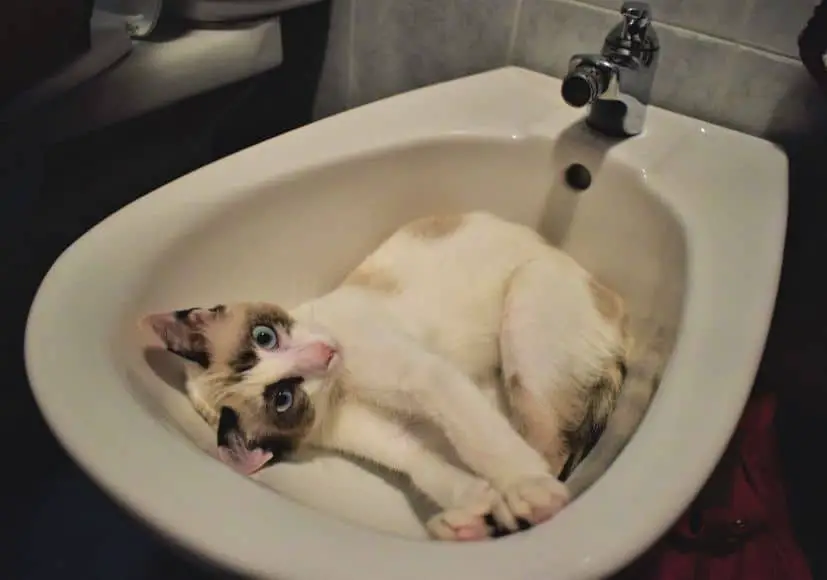Table of Contents
**This page contains affiliate links and I will be compensated if you make a purchase after clicking on my links**
Depending on when you’re reading this, we are currently in the midst of a worldwide toilet paper famine. All of us are looking for creative ways to reduce our TP need.
One strategy—that I was using long before this current crisis—is a bidet.
What is a bidet? A bidet is an appliance that you can use to apply clean water on your nether areas for additional cleanliness.
How do bidets clean you?
Don’t worry, this spray of water doesn’t come from a toilet bowl, but from the same pipes that generate your tap water. In most places, that water is clean and even drinkable.
This spray should have some force, that you can control; not enough to do any damage, but enough to clean off any stray fecal matter from your butt.
Both men and women can benefit from a good butt cleaning after pooping. (Especially for those susceptible to diarrhea or soft bowel movements…)
Women can enjoy the additional benefit of cleaning both the vaginal and urinary areas.
Likewise, a bidet can be used by anyone who simply wishes to “freshen up” without bothering with a full-on shower.
The use of soap is not needed and is generally not recommend, as soap can aggravate the sensitive tissues down below.
Greater hygiene without the sore butt
Those with hemorrhoids, irritable bowel syndrome (IBS), or inflammatory bowel disease (IBD) can especially benefit.
Despite advances in TP softness, excessive wiping can still aggravate sensitive tissues. Fortunately, the spray from the bidet is far gentler than traditional wiping.
In addition, hemorrhoid sufferers may find the warm spray provides some relief from inflammation.
Indeed, in a 2015 study by Ryoo, et. al. a warm-water bidet was like a sitz bath in reducing anal resting pressure in healthy volunteers.
(Anal resting pressure, which under normal circumstances keeps us continent, is elevated in those with hemorrhoids and anal fissures.)
Even better if you can’t reach
Perhaps you’re disabled, injured, pregnant, or overweight. Reaching behind to wipe may not be an option.
A bidet solves this problem.
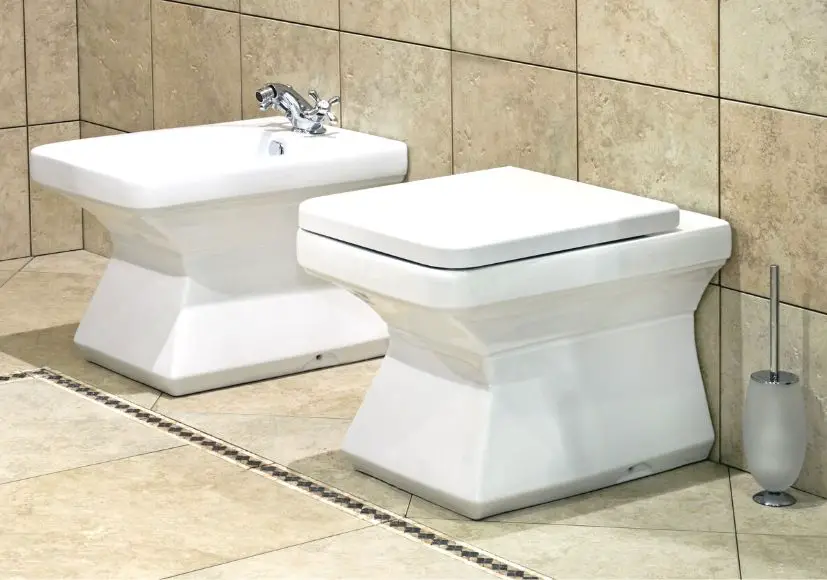
Three types of bidets. Pros and Cons.
There are infinite varieties that fall into three main categories: traditional, toilet, or handheld sprayer.
Traditional standalone bidet
The traditional standalone variety is one that is very common outside the US. Many of us who have traveled or live outside the US, are very familiar with these.
They usually sit next to the toilet and are around the same size. They resemble a low-to-the-floor sink. Like a sink, they have cold and hot running water that comes out of a tap. The water flow has been compared to that of a water fountain.
The downside is that you need room in your bathroom for this extra appliance.
If you need to use it, you’ll need to get up from the toilet and sit down on the bidet. You may even need to partially remove your pants if you choose to sit forward on it.
In contrast, the other types of bidets can be used without leaving the comfort of your toilet.
Toilet, toilet seat, or toilet add-on bidet
These bidets may be built into the toilet and are very common in Japan. The sprayer sits at the back of the toilet bowl and sprays upwards. These toilets can be ridiculously expensive, upwards of many thousands of dollars.
A more cost-effective solution is to keep your current toilet and install a bidet add-on. This add-on goes between your bowl and your toilet seat. Another option is a bidet toilet seat, which replaces the entire seat. (Make sure the size is compatible with your current toilet bowl.)
The add-on (or toilet seat) comes with a small water connector that is installed in the incoming water hose of your toilet to siphon off water for the bidet.
(If the water hose to your toilet is not accessible, then you can access the water hose going into your sink, assuming the sink is close by.)
Most add-ons/toilet seats are designed for straightforward installation that does NOT require a plumber (although you can always call one). Any amateur DIY’er should be able to handle the installation. (I self-installed mine.)
The simpler models use “cold” water only. But more advanced models provide the option of nice warm water for your behind. Depending on the model, to get this warm water, you can either connect a second hose to the warm water coming into your sink or use an onboard heating unit.
For the latter, you’ll need to plug your bidet into an electrical outlet. Odds are, you don’t have one near your toilet. A call to a certified electrician may be in order.
The basic bidet in this class provides cold water with a spray nozzle that can be adjusted for both angle and water pressure.
All bidets in this group should have some type of self-cleaning feature, which directs a stream to rinse off the spray nozzle before and/or after use. This feature may be automatic in the higher end models but will be an extra button or knob in most models.
Beyond the basics, additional bells and whistles (and buttons) are available:
- Heated seat (toilet and toilet seat versions only)
- Spray that can be either narrow (for the back), or wide (for the front)
- Oscillating and pulsating modes
- Temperature control
- Remote or app control
- Voice control
- Programable, for individual users
- UV sanitation for both the wand and bowl
- Rim lighting and other nightlights
- Air for drying
- Streaming music from onboard speakers
- Foot warming
Plus, other toilet features, such as automatic flush, mist cleaning, deodorizing, and automatic lid opening and closing.
There’s a reason these toilets are many thousands of dollars.

Bidet handheld sprayer
If your funds are limited, one of the easiest additions is a handheld sprayer. Like the bidet add-on, most of us will be able to install it ourselves.
Sprayers also come with an adapter to siphon water from the toilet intake water hose. From there, there is a long hose with a spray-head at the end. When not in use, this spray head can be clipped to the side of the toilet or a wall nearby.
The handheld sprayer may take a bit more practice than the other two options as you’ll need to direct the spray yourself to where it’s needed.
With all three types of bidets, there is a bit of a learning curve, especially for Americans who did not grow up with these devices. Until you master your bidet, your clothing may get a bit wet, so stripping down your lower half is recommended initially.
[Turn your phone sideways for easier viewing.]
| Bidet type | Traditional standalone | Toilet or toilet add-on | Handheld sprayer |
|---|---|---|---|
| Extra bathroom space needed? | yes | no | no |
| Heated water available? | yes | varies | no (usually) |
| Can be installed by an amateur DIY non-plumber? | God no | Toilet no Toilet seat yes Add-on yes | yes |
| Ease of use by those with disabilities? | poor | good | moderate |
| Extras | no | yes, yes, and yes | no |
| Expense | $$$ | $ – $$$$ | $ |
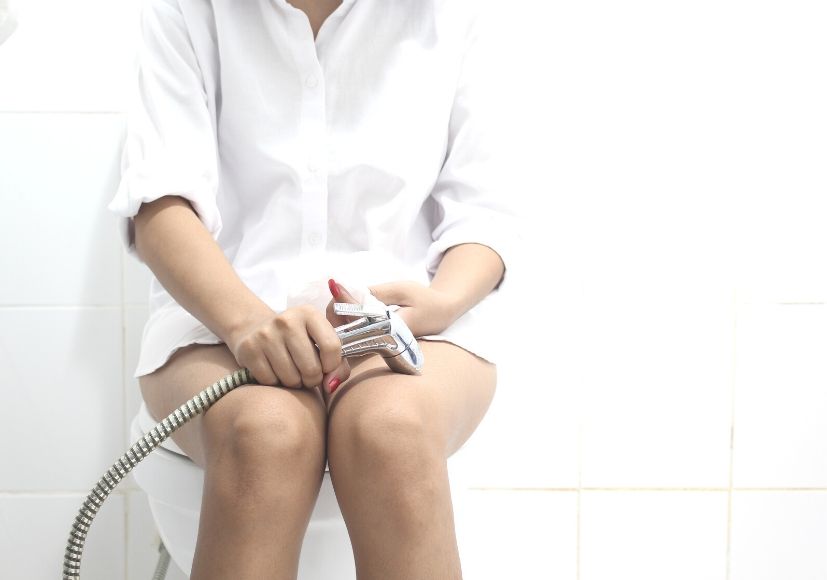
Bonus: Travel bidet
If you are not ready for the commitment of a regular bidet, you can try a travel bidet. Most are inexpensive squeeze bottles that allow you to direct a spray wherever you like.
Higher-end models are battery-operated with adjustable spray. Keep in mind that handheld models will not generate the same intensity of spray as the other types of bidets.
These are also good if you have a temporary need, such as postpartum care.
How to use a standalone bidet
Before exiting your toilet give your behind a quick wipe with TP as usual. You do not want to end up with pieces of fecal matter in your bidet. (The TP goes in your toilet or the trash, not in your bidet.)
This wipe step is unneeded for the other types of bidets where you hover over your toilet.
You can approach the standalone bidet from two directions, either backward, like on your toilet, or forward, with the taps in front of you.
If you focus is your behind, then facing out may work best. Likewise, if your focus is your front, then face the taps. If you’re in the latter position you may need to remove one leg of your pants in order to straddle the bidet.
Turn on the water and adjust the temperature. Remember that your tissues underneath are more sensitive to scalding than other parts of you, so go easy on the hot.
Although you can sit on the rim, to direct the stream you’ll probably need to squat slightly above the bidet. This will be tough for the elderly and those with disabilities.
Standalones vary in the amount of water pressure spray available. It is recommended that you adjust the water to spray around six to eight inches high.
If the spray is a bit weak you may need to use your hands to scrub the area. (Don’t worry, you’re washing your hands afterward, right?)
Use either TP or a bidet towel to dry yourself. (More on the bidet towel below.)
How to use a bidet toilet or bidet add-on
This group is the easiest to learn. After doing your business you may continue to sit as you are.
Press the button or knob to pre-clean the spray-nozzle. What you just dropped into the bowl could have splashed dirty water up onto the spray nozzle.
If you have a temperature option, start with low temperatures first and work your way up as you use your bidet.
Although you can adjust the angle of the nozzle, it’s usually faster to simply adjust yourself backward or forward while sitting on the bowl.
Activate the spray nozzle and adjust your body so that the spray goes where you wish. This spray is narrow and intense, so you don’t need to be super-close. Your target will be many inches away from the nozzle end.
Ladies start with your butt first, then if you wish additional cleaning, lean forward to direct the spray towards the vaginal and urinary areas.
(Focusing on the butt first will allow the spray to continue to wash the spray nozzle.)
It’s optional, but not a bad idea to activate the pre-cleaning again when you’re done.
Dry with TP or a bidet towel. If you have a higher-end model, enjoy the air drying.

How to use a bidet handheld sprayer (“bidet shower”)
The adapter attached to the water hose may have an on-off lever. Some people prefer to keep this in the ON position all the time for convenience. Others worry about leaks and turn it on only when needed.
Before you get seated comfortably, make sure this is ON.
Squeeze and quickly spray into the toilet to clean the spray head. If this is a shared bathroom you may wish to wipe down the spray head with a disinfectant wipe. Make sure you rinse as you don’t want to get any disinfectant on your nether areas.
You can continue to sit, but you may find that you have better access to your behind if you squat a bit above your toilet.
Guys can either spray from the front or reach around and spray from behind.
Ladies, it’s best to spray from the front, so the water spray is always moving from the genitourinary area towards your butt, not the other way around.
Initially point the spray towards you butt, start there, and work forward.
If you need to reach around to hit a target in the back, do that first, then return to the front.
The bidet experience without a bidet
If your shower has a handheld showerhead with a long enough hose, one option is to jump in the shower after doing your business.
Obviously, this requires removing at least your lower clothing, including any shoes and socks.
And go easy on the hot water!
A warning about warm vs cold bidet water
The water may be directly from the cold tap, in which case it may be a tad chilly on your bum. But as discussed above, many bidets have the option of adding hot water, either from the hot water tap or an onboard heater. Either way, the exact temperature is under your control.
Safety tip: the goal is to wash. Not disinfect. “Warm”, NOT hot, water only.
Those tissues are far more sensitive to scalding. In addition, ladies, remember that high temperature can kill beneficial vaginal bacteria, such as Lactobacillus. This will increase your susceptibility to vaginitis, either from an overgrowth of yeast (“yeast infection”) or other, non-beneficial, bacteria.
A warning about broken or inflamed skin
Warm water can feel nice on inflamed tissue, including hemorrhoids, or anal fissures. If the skin is broken or inflamed be careful and use a low-intensity spray and a low temperature.
If you are in a place where the water cleanliness is in question, do not use bidet water on broken skin at all.

Do bidets spray poop everywhere?
Under normal circumstances, everything washed from your butt will end up in the toilet bowl.
But yes, we know, diarrhea or a soft bowel movement makes a mess. (And those of us prone to these issues are more likely to own a bidet for this reason.)
Because the spray can be strong, yes there is the possibility of poop spraying everywhere. (Although, in fairness, it’s hard to know what contributed to the poop spray, the bidet or the original explosive diarrhea…)
Much of this may be from the spray bouncing off the water in the bowl. There’s an easy fix for this:
If the toilet bowl is a mess, flush first before using the bidet
Yes, you may need to flush again after using the bidet to clean your rear, but these are messy circumstances.
The spray nozzle in bidet toilets, seats, and add-ons stays retracted until use. And, as mentioned above, these bidets have a self-cleaning feature that rinses the spray nozzle before use.
Despite your earlier mess, the spray nozzle should now be relatively clean.
After, use these features again to clean and/or disinfect the spray nozzle. If using a handheld sprayer, consider pulling out some disinfectant wipes to wipe off the spray head.
(This should be obvious but do not use disinfectant wipes on your rear. Most contain alcohol, bleach, or other cleaning chemicals, which irritate the sensitive skin down there.)
Messy situations continued. What if a bidet isn’t enough?
After using a bidet it’s good practice to use a small amount of TP to both dry and confirm that the bidet has accomplished its cleaning mission.
If you drop a perfect bowel movement with little left behind, then you’re probably good.
However, for messier situations, a multi-pronged approach may be necessary. If there’s some left over after using the bidet TP wiping may be necessary. As your anal area is wet, the TP should work more effectively than dry TP.
Consider another round of bidet-washing or alternate with wet wipes designed for toilet use.
Even though these wipes are labeled “flushable” DO NOT FLUSH them
Even if they don’t clog up your plumbing, they are likely to clog things up further downstream. Throw them in the trash instead.
Despite your best efforts you can only wipe so much without irritating the area.
If you need to get serious, a Sitz bath is your next step. This is a small bath that you can fit over your toilet bowl and soak your heiny. Alternatively, you can fill your bathtub a few inches and hunker down for a few minutes. Hopefully, this will remove any remaining fecal matter that may be stuck in folds or crevices. Throw in Epsom salt for added relief.
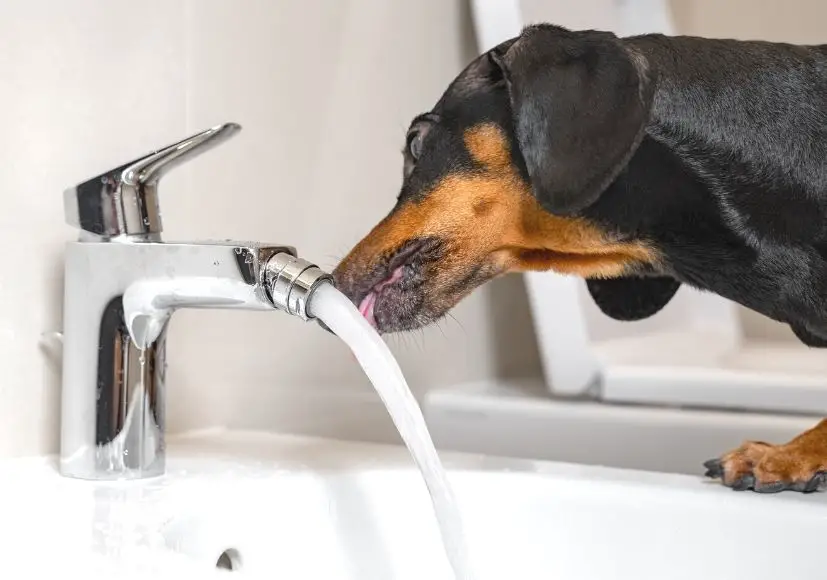
Are bidets safe for women?
As women, we can enjoy the extra cleaning for our genitourinary area (“genital” and “urinary”).
However, we may need to take a few extra precautions.
When it comes to toilet paper, we all know we’re supposed to reach behind and wipe our rear from front to back. From the front, we wipe our front in the reverse direction, from back to front.
In other words, wipe outwards, or away from the vagina.
Our poop is full of bacteria, mostly Escherichia coli (E. coli). E coli, and other gut bacteria are beneficial for the proper functioning of our digestive system. (This is not to be confused with other types of E. coli that can give you food poisoning.)
Likewise, our vagina has its own group of acid-loving beneficial bacteria, mostly Lactobacillus. In both cases, beneficial bacteria take up space and resources, preventing bad bacteria (or excess yeast) from gaining a foothold.
While located in close proximity, our anus and vagina have a separate bacterial ecosystem, that should not mix.
Although beneficial to our gut, E coli and other bacteria in our poop should NOT contaminate our vagina. Nor our urethra, where our urine comes out. Vaginitis or a urinary tract infection (UTI) could result, respectively.
If we girls are doing less wiping and more spraying, is there an increased risk of cross-contamination?
Studies are still lacking, however a three-year Japanese survey study by Asakura, et. al. found little relationship between bidet toilet use and either hemorrhoids or genitourinary infections, such as UTIs and vaginitis.
On the other hand, in another Japanese study by Ogino, et al., women seeing their gynecologist for “an increase in vaginal discharge”, lacked normal vaginal Lactobacillus in almost 43% of bidet toilet users, vs only 9% of non-users.
In addition, in 19% of the study participants, fecal bacteria was found in the vagina. Of those, 92% were bidet users.
To put these percentages in context, keep in mind that the study participants were women seeking gynecological care, and therefore had something going on in the first place.
It should be noted that these two studies focused on bidet toilets, not traditional standalone bidets. Bidet toilets generate a higher-intensity spray than the standalones, which could facilitate cross-contamination more readily. Maybe.
So yes, there may be a risk, but that risk can be mitigated with a little care.
Extra precautions for female bidet users
There are no studies on specific ways that people can and should use bidets. But common sense would dictate the following.
Just like we do with wiping, keep the direction of the spray moving away from the vagina. In other words, make sure that water that is cleaning your anus doesn’t touch your other parts. Or if it does touch your other parts, do an additional wash of those parts.
This is probably the easiest to manage with a handheld sprayer. Ideally, hold it in front of you, not behind. If you need to reach your butt, continue to hold it in front, but angle it to hit the areas you wish to clean.
Even though bidet toilets, seats, and add-ons provide some adjustment of the spray hose, you will need to adjust your body to facilitate the best angles. Start with your butt first, then lean forward to direct the spray to your other parts.
Bidet use aside, here are additional hygiene tips from the Cleveland Clinic.
Bidet etiquette at home or away
If you have your own bidet in your own bathroom, then feel free to skip ahead. However, if you share your bidet or visit a friend’s home with a bidet, then read on.
Keep the bidet clean. Rinse out a standalone bidet after use. Likewise, wipe down the spray head of a handheld. And use the nozzle cleaning feature on your toilet.
Drying options for you include TP, air drying, or a bidet towel.
This bidet towel should be a hand towel or washcloth designated for this purpose and should NOT be mixed up with your regular hand towels or wash clothes—the ones you use to dry your hands and wash your face. Use a different style or color to keep them straight. If applicable, make this clear to other family members.
If visiting a friend’s home, unless instructed otherwise, DO NOT use the towel hanging nearby to dry your bum. For all you know, your friend uses that towel to dry their hands.
Evidently, you’re not supposed to use a standalone bidet to wash either your pet or your feet, but if it’s your bidet, why not?
Also WASH YOUR HANDS.
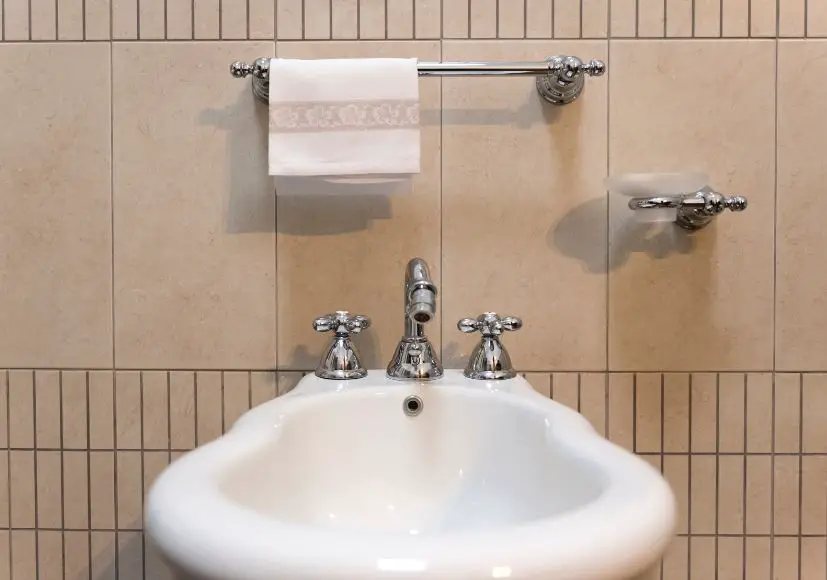
Tushy—mini-review
What bidet do I have? I purchased an add-on from Tushy several years ago.
At the time I wasn’t motivated to have an electrician punch a new hole in my wall to install an electrical outlet, therefore I was restricted to simpler models that would get the job done at a lower cost.
Tushy has two models, the “classic” and the “spa”. Neither requires electricity.
Other than a small button to adjust the angle of the spray nozzle (which I set and forget), the Tushy classic has one knob. Turn it to the left to clean the nozzle; turn it to the right to spray your behind. You adjust the intensity of the spray by how far you turn the knob. For me, only a tiny turn to the right is needed.
Tushy brags that installation takes only ten minutes. I think it took me a bit longer—perhaps closer to 30-60 minutes. You unscrew the water intake hose from your toilet and add the provided adapter. That adapter is then connected to the add-on itself.
Next, unscrew your toilet seat and sandwich the add-on between the bowl and the seat. Re-install your toilet seat.
Done.
With one-button operation, the Tushy is easy to use, with a simple intense stream. Although adjustment of the nozzle angle is limited, this isn’t much of an issue, as it’s very easy to adjust your sitting position relative to the stream.
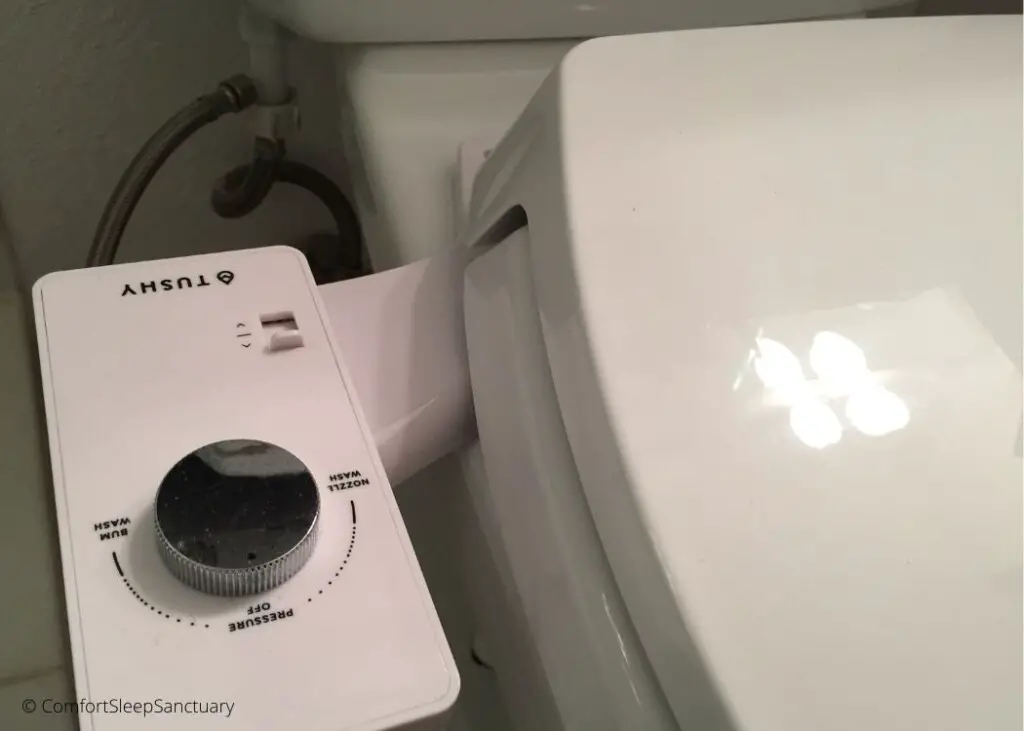
The classic, which I purchased, provides cold water only. I live in sunny Southern CA, so my water pipes don’t get particularly cold. It may be a completely different story if you live in a cold climate. If so, you may need to purchase a bidet with a heated water feature.
For the addition of warm water, choose the Tushy Spa. The Spa has a second big button that controls the temperature.
If you go for the Spa, keep in mind that the warm water will need to come from the hot water intake hose coming into your sink, therefore the sink needs to be close to your toilet. (A hole for the hose may need to be drilled into the cabinet under the sink.)
Enjoy!
You may not eliminate your need for toilet paper—some wiping may still be required to get everything. However, you may be able to significantly reduce your usage. And in this time of scarcity, that’s a good thing.
Top photo: © Unknown via Canva.com
[If you experience issues with menus or links not working, it is most likely due to your Ad blocker.]

